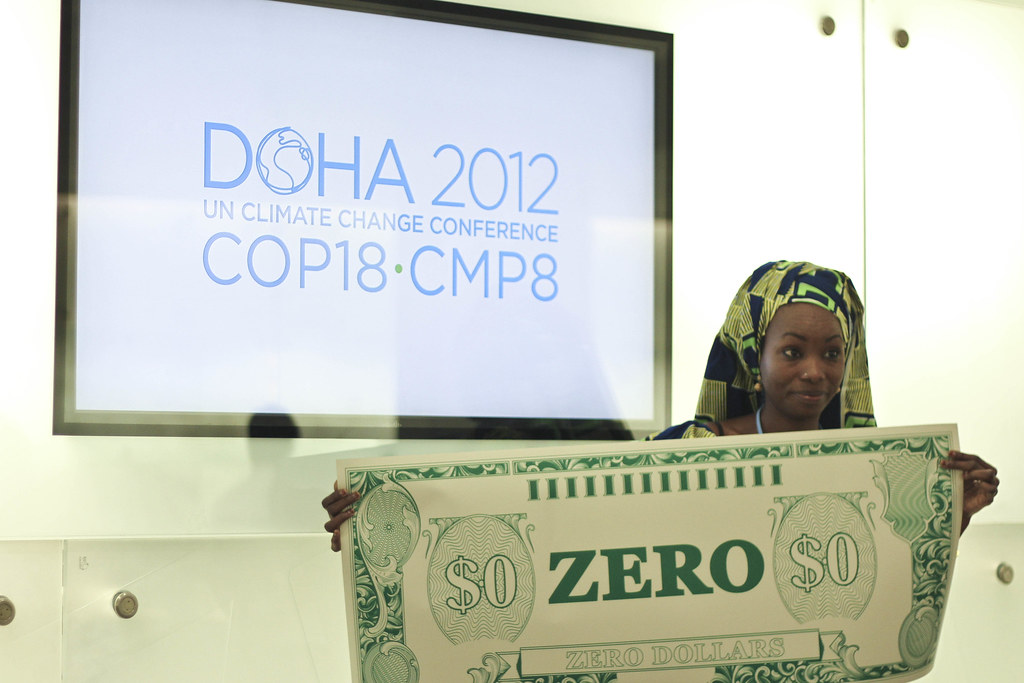Piracy to Solve Climate Change?
Michael M | December 3, 2012.

Climate change. Piracy. Technology. Three things that don’t normally go together, only within the context of the UN climate change negotiations, could actually be the key to tackling dangerous climate change. The issue of pirating clean technologies is contentious as negotiations are underway in Doha, Qatar.
The rise of the Internet has allowed for greater and easier access to intellectual property. Combined with the growth of manufacturing in emerging economies like Brazil, China and India or the high cost of purchasing intellectual property conventionally, it is now irresistibly tempting for governments to turn a blind eye to intellectual property theft.
At the same time, developing countries insist that access to clean technologies is a necessity if they are to make the rapid emission reductions increasingly called for by the developed world without damaging their economic development.
As the talks progress, negotiators will do well to remember the lessons learned in tackling music piracy over the last two decades. After struggling to recover from the unforeseen rise of digital music sharing and the sudden shift of customers away from traditional distribution methods, recent industry moves of making access to music both convenient and affordable have resulted in positive outcomes.
In the clean technology space, many industrialised countries are happy to share their climate friendly technologies, such as in renewable energy and agricultural techniques, but they are less willing to share the intellectual property. As a result developing countries are not able to legally produce these technologies in their own country.
Proponents of stronger intellectual property protections and tighter enforcement argue that strict controls are necessary to preserve incentives to innovate. Yet those accused of stealing new technologies maintain that high fees and restrictions on production represent an unnecessary barrier to access.
The initial response from music distributors to piracy was implementation of Digital Rights Management (DRM) controls, which placed tight restrictions on the way that purchased music could be consumed. However this only motivated consumers to seek alternative sources of music that provided greater freedom. In a perverse outcome, DRM simply pushed many consumers to steal more music.
The second response was strict enforcement of copyright legislation, with very public crackdowns on large music sharers. The impact of this aggressive approach was that the music industry developed a reputation as a bully, with scant regard for its customer base.
It has been only with the emergence of the Apple iTunes store, and more recently services like Spotify, that music piracy has seen a decline. These services showed that when presented with the option to consume music through an integrated service that is convenient and appropriately priced, many music consumers show a willingness to pay for the product.
These are the experiences that technology transfer policy makers should apply to the challenge of managing the intellectual property of clean technologies.
The current negotiations have the potential to build a strong foundation for improving access to clean technology in developing countries. For success to be achieved, it will require concessions from both sides. Patent rich countries should acknowledge that their technologies have an importance that reaches beyond trade concerns. Likewise, governments turning a blind eye, or worse encouraging, the co-opting of overseas technology must do more to ensure companies are working within the intellectual property rights framework.
The DRM approach didn’t work for music and it won’t work for clean technology; it will only enforce an adversarial environment for future climate change negotiations.
In all of this, we cannot forget that climate change is escalating as an international emergency. The traditional development path of innovation grounded in inefficient means of production and dirty, cheap energy is no longer appropriate.
It’s time to make clean technology affordable and accessible for developing countries. Developing and developed countries should realise that such an approach will benefit both sides.
By Michael Mazengarb, photo by Laura Owsianka.










comment